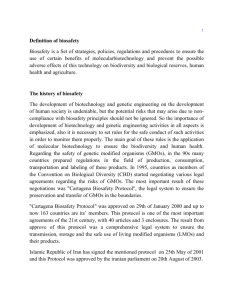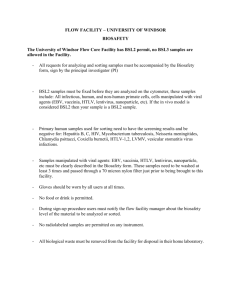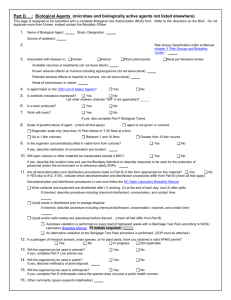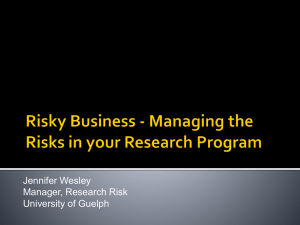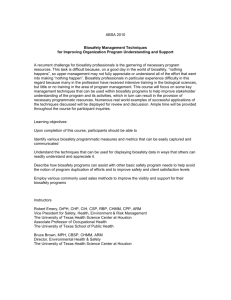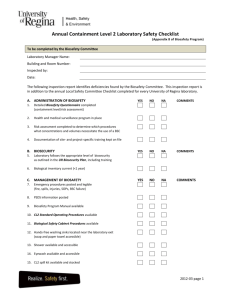NIH and Cornell IBC declare September as Safety Awareness
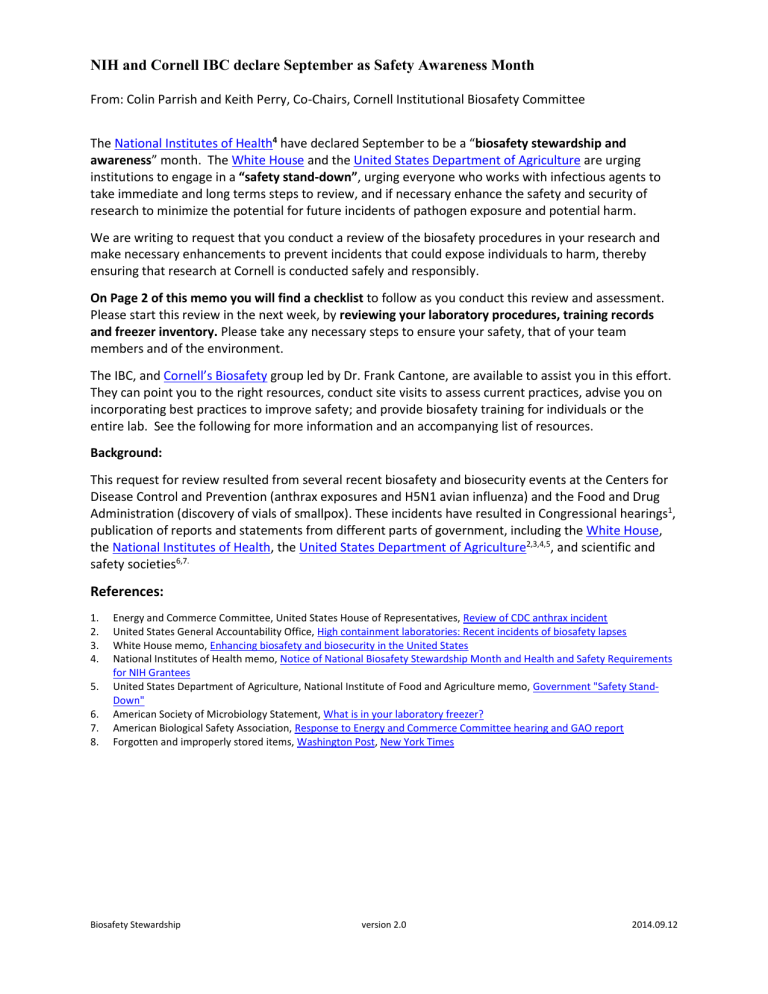
NIH and Cornell IBC declare September as Safety Awareness Month
From: Colin Parrish and Keith Perry, Co-Chairs, Cornell Institutional Biosafety Committee
The National Institutes of Health 4 have declared September to be a “biosafety stewardship and
awareness” month. The White House and the United States Department of Agriculture are urging institutions to engage in a “safety stand-down”, urging everyone who works with infectious agents to take immediate and long terms steps to review, and if necessary enhance the safety and security of research to minimize the potential for future incidents of pathogen exposure and potential harm.
We are writing to request that you conduct a review of the biosafety procedures in your research and make necessary enhancements to prevent incidents that could expose individuals to harm, thereby ensuring that research at Cornell is conducted safely and responsibly.
On Page 2 of this memo you will find a checklist to follow as you conduct this review and assessment.
Please start this review in the next week, by reviewing your laboratory procedures, training records
and freezer inventory. Please take any necessary steps to ensure your safety, that of your team members and of the environment.
The IBC, and Cornell’s Biosafety group led by Dr. Frank Cantone, are available to assist you in this effort.
They can point you to the right resources, conduct site visits to assess current practices, advise you on incorporating best practices to improve safety; and provide biosafety training for individuals or the entire lab. See the following for more information and an accompanying list of resources.
Background:
This request for review resulted from several recent biosafety and biosecurity events at the Centers for
Disease Control and Prevention (anthrax exposures and H5N1 avian influenza) and the Food and Drug
Administration (discovery of vials of smallpox). These incidents have resulted in Congressional hearings 1 , publication of reports and statements from different parts of government, including the White House , the National Institutes of Health , the United States Department of Agriculture 2,3,4,5 , and scientific and safety societies 6,7.
References:
1.
Energy and Commerce Committee, United States House of Representatives, Review of CDC anthrax incident
2.
United States General Accountability Office, High containment laboratories: Recent incidents of biosafety lapses
3.
White House memo, Enhancing biosafety and biosecurity in the United States
4.
National Institutes of Health memo, Notice of National Biosafety Stewardship Month and Health and Safety Requirements for NIH Grantees
5.
United States Department of Agriculture, National Institute of Food and Agriculture memo, Government "Safety Stand-
Down"
6.
American Society of Microbiology Statement, What is in your laboratory freezer?
7.
American Biological Safety Association, Response to Energy and Commerce Committee hearing and GAO report
8.
Forgotten and improperly stored items, Washington Post , New York Times
Biosafety Stewardship version 2.0 2014.09.12
SAMPLE BIOSAFETY REVIEW CHECKLIST
1.
EXAMINE SAFETY PROCEDURES
□ Ensure that Signage in your lab identify the potential biohazards
□ Standard Operating Procedures (SOPs) for the containment, handling, disposal or disposal at the College of Veterinary Medicine and decontamination of the biohazards
□ Review the SOPs to ensure that they are accurate and current
□ Post the SOPs or ensure they are easily accessible to all lab members
□ Update or write SOPs if needed. Contact EH&S (255-8200) for help.
□ Use the following checklists to develop, refine or otherwise modify the SOPs Biosafety
Level 1, Biosafety Level 2
□ Review your approved MUA to ensure that it covers all your work with biohazardous materials and that all your lab personnel are listed on it.
□ Contact the IBC office (607-255-7219) if you need help with amending the MUA.
2.
REVIEW AND REINFORCE TRAINING
□ Make sure staff have appropriate training in general safety (e.g., lab safety, bloodborne pathogens) and function and procedure specific (using a biosafety cabinet, working with aerosols, personnel protective equipment) to safely perform research activities.
□ Ensure documentation of all completed and planned training
□ Review EH&S Biosafety Manual , which describes practices for safe handling, disposal, decontamination, emergency response, etc.
□ Use the checklists for Biosafety Level 1 , Biosafety Level 2 as training resources
□ Watch the short videos on safety practices on the EH&S You Tube channel, with your
team. Tip: These could be incorporated into a lab meeting for a quick safety training session
3.
TAKE STOCK OF FREEZER CONTENTS
□ Maintain an inventory of your own freezer contents, and of any legacy freezers in your
area (e.g. from others who have left Cornell). If you don’t have a management system now is the time to start.
□ Establish a process to inventory and establish chain of custody of biohazardous materials
when students or post-docs leave the lab
□ Review the contents of freezers/refrigerators
□ Wear gloves and other standard PPE (lab coat and a mask) while handling the contents of the freezer.
□ Check labelling: All containers/samples should be clearly labelled with identifying information (i.e. sample name, date collected, experiment # or ID, initials of responsible individual) and expiration date if applicable.
□ Dispose of, in regulated medical waste, any unneeded, poorly labeled materials or materials past their expiration dates.
□ Material you are unsure of how to handle or dispose of -Contact EHS (607-255-8200)
(read about more examples of improperly stored and forgotten items at NIH and FDA labs 8 ).
Biosafety Stewardship version 2.0 2014.09.12

